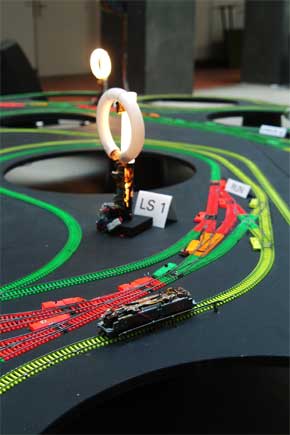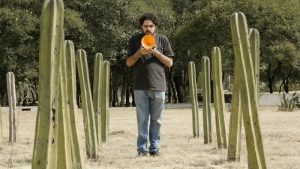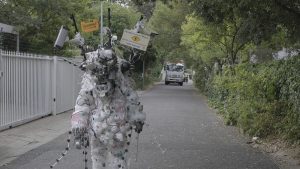In 1936, Alan M. Turing developed the Turing machine, a computing machine with which anything can theoretically be calculated.
This concept was translated by Austrian artists David Moises and Severin Hofmann into a model railway. The locomotive of the Turing Train Terminal runs through a program routine on a scratch tape and turns on read-write heads. Different types of switches trigger computational steps.
 Three “bits” are first written by a locomotive into memory (the switches). The locomotive then drives through the system, sets the writing/reading heads and returns to its starting point. In order to calculate one bit, some 80 meters of track must be covered. The result of the calculation is a change in the track system. The train is able to carry out six mathematical operations.
Three “bits” are first written by a locomotive into memory (the switches). The locomotive then drives through the system, sets the writing/reading heads and returns to its starting point. In order to calculate one bit, some 80 meters of track must be covered. The result of the calculation is a change in the track system. The train is able to carry out six mathematical operations.



![7 art and tech ideas I discovered at Meta.Morf 2024 – [up]Loaded Bodies 7 art and tech ideas I discovered at Meta.Morf 2024 – [up]Loaded Bodies](https://we-make-money-not-art.com/wp-content/uploads/2024/05/53705969154_73dfdfea6f_c-300x200.jpeg)



